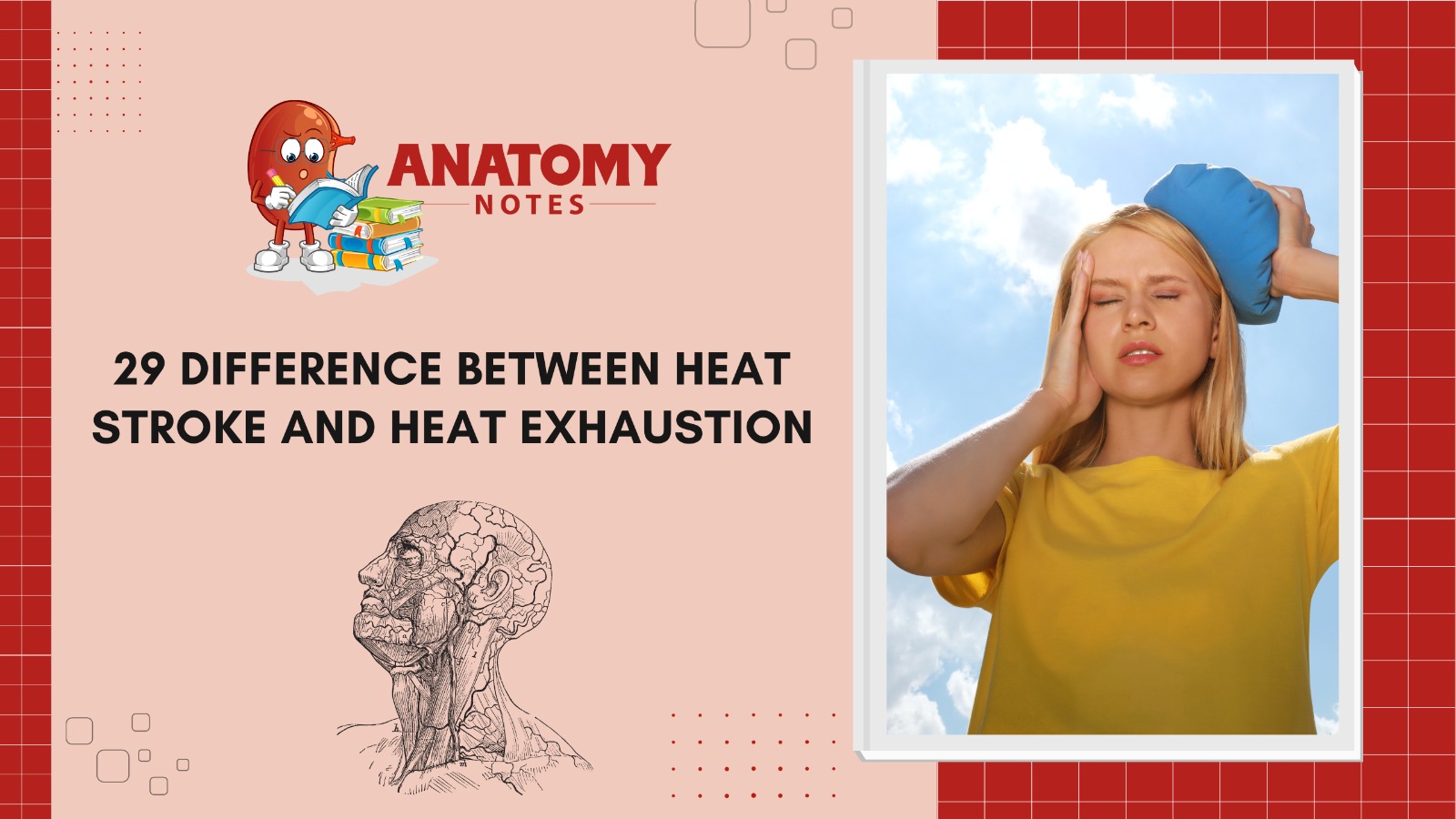In hot, humid conditions, heat stroke and heat exhaustion can occur if the body can’t regulate its temperature. Both diseases have varied symptoms and severity levels. To quickly treat these illnesses, you must know the distinctions. Heat exhaustion is mild heart disease. When weary and sweating excessively, it usually happens. Heat weariness produces sweating, dizziness, nausea, a quick pulse, and chilly, damp skin. Heat-weary people should be sent to a cooler spot, given refreshments, and instructed to rest. Heat stroke can result from inaction.
Heat stroke is life-threatening and requires immediate medical attention. After prolonged exposure to extreme temperatures, the body’s temperature-regulating mechanism fails. In heat stroke, the body stops sweating, raising its temperature alarmingly. Heat stroke can induce disorientation, rapid breathing, flushed skin, a fast heartbeat, and possibly loss of consciousness. Heat stroke can damage organs. Rapid cooling, such as immersing the individual in cold water and seeking aid, prevents issues from worsening.
Heat stroke and heat exhaustion differ largely in severity and bodily response to heat. Heat exhaustion is caused by dehydration and electrolyte overload. It is harmful yet treatable. When the body’s temperature-controlling mechanisms fail, heat stroke can kill. Doctors must treat it immediately. Staying hydrated, wearing the correct garments, and avoiding heat, especially in high temps, helps prevent heat stroke and exhaustion. Know the indications and take the proper actions to safeguard outdoor workers, athletes, and the elderly.
Heat stroke and heat exhaustion share symptoms and risk factors, however, they are separate illnesses with differing severity. Heat exhaustion can lead to heat stroke, although drinking water and resting can help. Heat stroke requires immediate medical attention. People can avoid heat illness by learning these distinctions and taking measures.
|
S. No. |
Aspect |
Heat Stroke |
Heat Exhaustion |
|
1 |
Severity |
More severe and life-threatening |
Generally less severe |
|
2 |
Core Body Temperature |
Often above 104°F (40°C) |
Below 104°F (40°C) |
|
3 |
Symptoms |
Altered mental state, confusion, delirium, seizures, unconsciousness |
Heavy sweating, weakness, dizziness, nausea, headache |
|
4 |
Sweating |
Profuse sweating, possibly pale skin |
|
|
5 |
Skin Condition |
Hot and dry skin |
Cold, clammy, and moist skin |
|
6 |
Pulse Rate |
Rapid and strong pulse |
Rapid and weak pulse |
|
7 |
Breathing |
Rapid and shallow breathing |
Rapid and shallow breathing |
|
8 |
Coordination |
Lack of coordination, possible collapse |
Fatigue, possible weakness |
|
9 |
Thirst |
Not excessively thirsty |
Experiencing thirst |
|
10 |
Behavior Changes |
Confusion, irritability, agitation |
Fatigue, irritability |
|
11 |
Nausea and Vomiting |
Common |
Common, especially in more severe cases |
|
12 |
Treatment Approach |
Medical emergency, rapid cooling |
Rest, hydration, moving to a cooler place |
|
13 |
Medical Attention Required |
Immediate medical attention is crucial |
Medical attention recommended |
|
14 |
Risk Factors |
Can occur suddenly and progress rapidly |
Can develop from untreated heat exhaustion |
|
15 |
Neurological Symptoms |
Often confused or unconscious |
|
|
16 |
Physical Disorientation |
Common |
Possible, but less severe |
|
17 |
Skin Redness |
Possible skin redness, sometimes not |
Less pronounced skin redness |
|
18 |
Duration of Symptoms |
Progresses rapidly without intervention |
Can last hours if not treated promptly |
|
19 |
Hydration Level |
Severely dehydrated |
Dehydrated, but not as severe |
|
20 |
Response to Cooling Measures |
May not respond well to cooling efforts |
Responds positively to cooling measures |
|
21 |
Convulsions |
Possible, especially in severe cases |
Not common |
|
22 |
Medications |
Prescription medications can contribute |
Not directly related to medication use |
|
23 |
Urine Output |
Decreased or absent urine output |
Reduced urine output |
|
24 |
Cognitive Impairment |
Common, confusion or delirium |
May experience cognitive difficulties |
|
25 |
Heart Rate |
Increased and rapid heart rate |
Rapid but not as pronounced heart rate |
|
26 |
Blood Pressure |
Blood pressure can be high or low |
Blood pressure may drop |
|
27 |
Consciousness |
Unconsciousness is possible |
Generally conscious, but weak |
|
28 |
Treatment Focus |
Emergency medical care and cooling |
Cooling, rehydration, rest |
|
29 |
Physical Collapse |
Possible and can progress to unconsciousness |
Less likely, may occur in severe cases |
Frequently Asked Questions (FAQS)
Q1. What is the main difference between heat stroke and heat exhaustion?
Heat stroke is more severe than heat fatigue. Dehydration and electrolyte imbalances from heavy perspiration induce moderate heat exhaustion. Heavy sweating, dizziness, nausea, and clammy skin are symptoms. Heat stroke, which occurs when the body’s internal temperature regulation fails, is more serious and life-threatening. It requires immediate medical intervention to prevent disorientation, loss of consciousness, and organ damage.
Q2. How can I prevent heat-related illnesses?
Staying hydrated, wearing light-colored clothes, and avoiding vigorous activity during the warmest portions of the day can prevent heat-related diseases. Sunscreen and shaded or air-conditioned breaks can also assist. Preventing heat exhaustion and heat stroke requires recognizing the signs and when to seek medical treatment.
Q3. What should I do if I suspect someone has a heat stroke?
Act soon if you suspect heat stroke. Call 911 immediately. While waiting for aid, relocate the sufferer to a cooler place, ideally air-conditioned, and administer cold compresses or cool water. Give them fluids only if they’re awake.
Q4. Can heat-related illnesses affect anyone?
Some people are more sensitive to heat-related ailments. Children, the elderly, athletes, outdoor laborers, and anyone with heart disease or obesity are in danger. In hot weather, these people must be cautious about heat-related suffering.
Q5. What are common heat exhaustion symptoms?
Heat exhaustion causes profuse perspiration, dizziness, nausea, vomiting, quick pulse, and chilly, clammy skin. Muscle cramping and pain may occur. Early treatment with cooler temperatures, water, and rest can frequently prevent these symptoms from developing.




